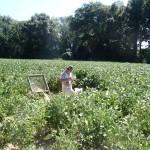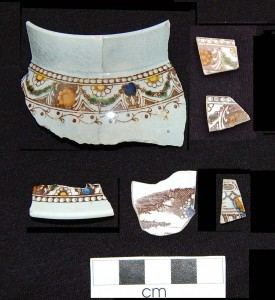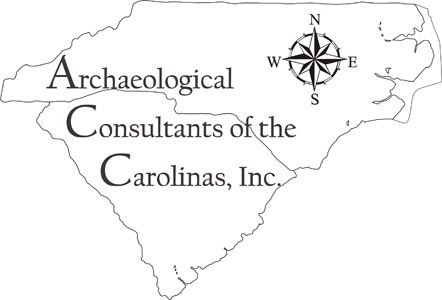Data Recovery at 31ON1767: An Early American Farmstead on the New River
Onslow County, North Carolina
ACC, Inc. conducted archaeological data recovery excavations at site 31ON1767 in Onslow County, North Carolina in 2011. This site is located along the New River, south of Richlands, North Carolina. The site is comprised of material and structural remains dating to the late eighteenth to very early nineteenth centuries. The primary methods of field investigations were mechanical scraping of five blocks within the site, and the detailed mapping and excavation of cultural features.
Analyses of data recovered during field investigations showed the site to have two distinct loci, with at least one structure in each. The structure presumed to be in the southern locus was probably earthfast, with no glass windows, and no brick elements. The structure in the northern locus was more substantial, post-in-hole construction, with a brick hearth/chimney. Mean ceramic dates indicate that the structure in the southern locus slightly predates that in the northern locus. The site was occupied for a relatively short period of time.
A total of 58 cultural features were identified, including two privies, a hearth with associated sub-floor pit, and numerous posts and post clusters. These features, as well as artifacts recovered from general block collections, reflect several activity areas within the site. The southern locus appears to have been an area in which animal processing took place, as well as small-scale metalworking.
Members of the Wood family were the landowners in the late eighteenth and early nineteenth centuries, with ties to many of the other local families. Archival evidence shows that the land on which this site is located belonged to Jacob Wood at the time of site occupation. However, it is not clear which, if any, member of the Wood family actually resided at site 31ON1767.
The occupants of the site appear to have been of moderate economic and social status, with a wide variety of ceramics, and some indications (such as bone-handled utensils) of wealth. However, in general, the range of artifact types was limited, and the occupants would not have been well-to-do.
Site 31ON1767 is unique in that it appears to represent a tightly-framed snapshot of a late eighteenth to early nineteenth century rural farmstead in the coastal region of North Carolina, occupied for as little as a single generation by a middle-class family. The site provides insight into the layout of an “average” farm at this time, as well as construction methods and activities undertaken by its occupants.




